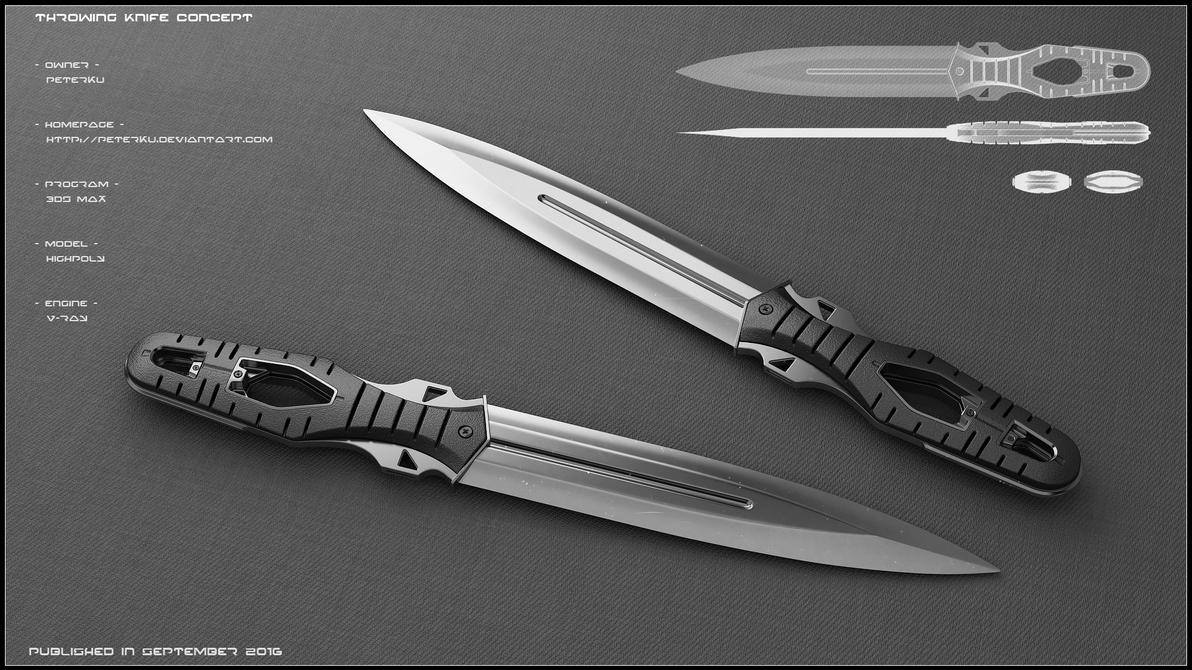Kalyn Tal'verda
Slicer

OUT OF CHARACTER INFORMATION
- Intent: To make a more advanced version of the TICKS for use by Lyra Sarn
- Image Source: https://peterku.deviantart.com/art/Throwing-knife-concept-636709543
- Canon Link: N/A
- Primary Source: TICKS
- Manufacturer: [member="Lyra Sarn"] (Bio)
- Affiliation: [member="Lyra Sarn"]
- Model: A-TICKS (Advanced Thermal Information Compromising Knife System)
- Modularity: N/A
- Production: Unique
- Material: Heat Resistant Phrik Alloy.
- Classification: Throwing Knife/Data Jack
- Size: Small
- Weight: Light
- Cutting Power - Much like the base TICKS this weapon has an insane degree of cutting power, in fact it can cut even better than the base TICKS.
- Throwing - This version is weighted specifically to aid in knife throwing.
- Catch and Release - A repulsor in the base is specifically tuned to a repulsor generator implanted in Lyra's hands, allowing her to propel them at high speeds, and retrieve them from well over 100 meters.
- Data Jack - Much like its older, more tame brother, this tool can be used to jack into computer systems.
- Chop Chop - This knife has cutting power comparable to lightsabers.
- Phrik - This thing is strong as your grandpas liquor.
- Zoom Zoom - The knife has a repulsor in the base which allows it to be propelled at high speeds, and retrieved from a target from a distance.
- Jacking - This thing can still be used to gain physical access to computer systems by driving it into a PCB.
- ZAP - Still very loud when activated, not a stealth weapon.
- EMP - An EMP can render this basically a big heavy throwing knife.
- BZZZZZ - The thing vibrates much more than its older brother.
The A-TICKS stems from a personal project Lyra undertook to fix her perceived issues with the consumer model TICKS; Namely that the normal TICKS was not very good at killing things. The normal TICKS is a tool that can be used as a weapon in a pinch, Lyra wanted a weapon that can be used as a tool when necessary. The A-TICKS is the outcome. With a phrik construction and an amped up battery, this device can cut through just about anything without much of an issue, and it has over 30x the battery life of the old TICKS, giving it a significant advantage in a fight. The Repulsor in the base gives the knife much more range and much easier retrieval from a distance, and a carefully weighted design aids in it being thrown normally as well.
This is all packaged with the same utility as before. Lyra made sure to keep the designs highly private as she intends to use it as an edge to keep ahead of the competition, the only person in the galaxy who knows how to manufacture the A-TICKS is her, and she intends to keep it that way, keeping up to 30 A-TICKS on her at a time.






